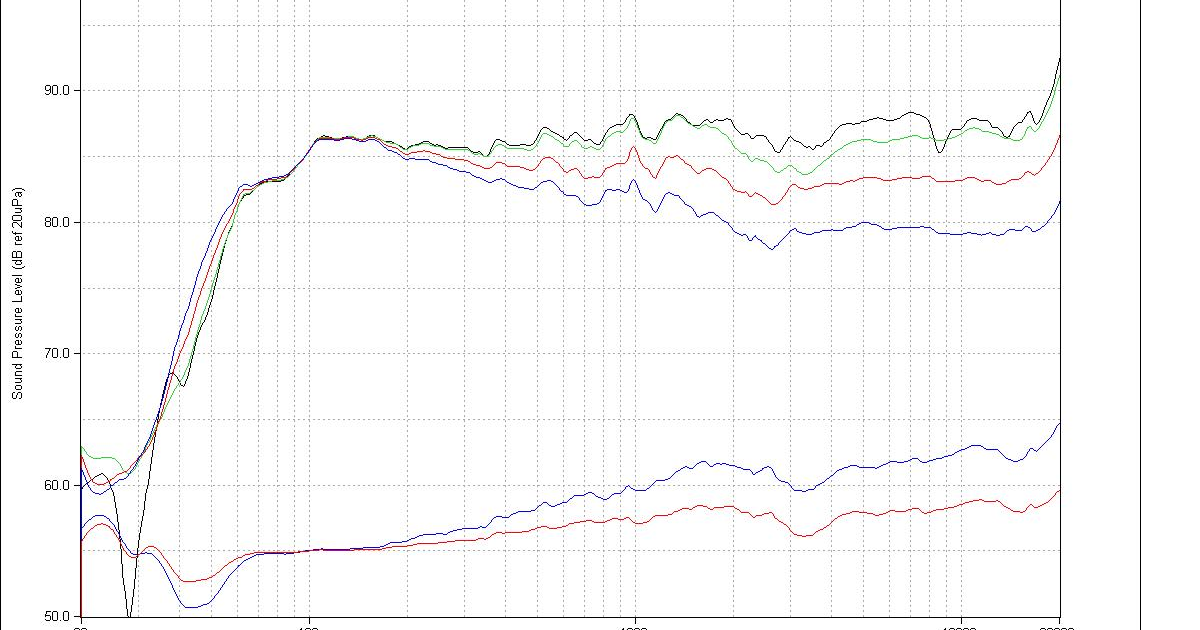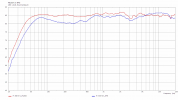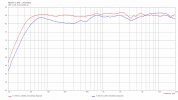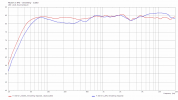They not only should be, but they are. Don't mistake MLSSA for something silly, it was a break trough and was considered the industry standard and is still used. Audiophile Magazine or whatever it is named uses it, as a bunch of other magazines and I know a leading speaker manufacturer that uses my ols MLSSA board for R&D. They had some finished systems measured by a Klippel system but they immediately saw that didn't work out right. That Klippel robot is very clever but I would like to see what it can do that absolutely cannot be done with a large room and software like ARTA, REW, Monkey Forest or ..... MLSSA

.
Bert is correct, MLSSA is not and has never been some hobbyist device, it was indeed the industry standard for loudspeaker measurement for decades. Harman used it for the majority of their measurements. You can see this here:
Objective loudspeaker measurement data - how to find it, how to interpret it, how to choose speakers based on the data.

speakerdata2034.blogspot.com
All of the older discontinued products that you see on that above page were taken with MLSSA.
Stereophile (John Atkinkson) still uses it.
For a maximum length sequence analyzer (hence the name, MLSSA - Maximum Length Sequence System Analyzer) it is still the standard and far superior to anything else that uses this technology exclusively. Here is info on what a maximum length sequence is:
https://en.wikipedia.org/wiki/Maximum_length_sequence
MLSSA is hardware based and this is the reason it hasn't evolved to produce more graphically friendly plots. The MLSSA board requires a full size ISA slot. I had many conversations with Doug Rife back in the day, he had given thought to modernizing the board so it can be used in a PCI slot. However, as I recall - he did quite well and decided to retire instead. MLSSA cards aren't inexpensive, back then - the base board was about $3500, then you can add SPO (speaker parameter option) for taking Thiele/Small parameters as well as other very useful options. We also added what is known as the RCAI box (Remote Controlled Analog Interface) to both of our complete MLSSA systems, which automated many functions and eliminated the hassle of continually connecting / disconnecting various cabling required for different testing procedures. We also integrated our main MLSSA system with a turntable (MLSSA can control various turntables) such that off-axis measurements (and spinorama) can be fully automated. This was 25+ years ago

I often search ebay to find old 386 based PC's that can take a full size ISA slot so that we have backup computers available, as well as having old copies of windows 95/98 around, as MLSSA software is DOS based but it runs well in a dos window on these old operating systems. Loads of fun and great nostalgia for me using DOS.
The problem with MLSSA, or really for any measurement system except Klippel NFS, is - of course - how to get an accurate anechoic bass response without having an anechoic chamber. For MLSSA (and nearly all other measurement systems), the process is to use nearfield or groundplane measurements and then "splicing" that measurement into the more accurate response where reflections can be gated out of the time domain. Accuracy of this technique was perfectly acceptable back in the day. MLSSA automates that splicing but the results are never that great and this can be seen in every Stereophile measurement where there is always a large bump in the bass response. One can manually adjust the the frequency of the splice, which can help reduce that bump, but then other inaccuracies appear above that bump. Harman used the MLSSA in their anechoic chamber, so their bass response measurements were far more accurate.
Comparing our original published Sierra-1 measurements (taken about 20 years ago with MLSSA) against a Sierra-1 we built up just to measure on the NFS is an interesting study. The measurements are actually closer than I expected them to be, again - we are comparing a speaker assembled measured and designed 20 years ago to one we just recently built up. Low frequency response between the two measurements are quite similar, while the NFS is showing -4dB at about 50Hz and MLSSA was showing -2dB at the same frequency. MLSSA measurement is not showing that midbass droop however, and that goes back to what I mentioned above regarding the splicing. If we spliced at a lower frequency, that upper midrange response would show more droop, but then we would have a large bass "bump" - basically, it comes down to choosing the inaccuracy. Sensitivity appears to be nearly identical, and we can clearly see that slight rise in the response starting at ~600Hz, and the dip at 3kHz which is caused by cabinet diffraction. Both NFS and MLSSA are showing this dip to be about 3dB. NFS is showing a slight HF rolloff at about 17kHz while MLSSA does not show this. This could simply be tweeter tolerances or even microphone differences. Technically speaking, the mic we have with our MLSSA is the better mic compared to what Klippel supplies with the NFS. We are using a very expensive reference standard microphone with MLSSA (ACO Pacific 7012/4012) But again, we are comparing measurements taken 20 years ago to measurements taken maybe 6-7 weeks ago on a speaker assembled 2 decades later than the original.
We still use MLSSA for many functions, it is incredibly fast - I can take an accurate quasi-anechoic measurement with the MLSSA in seconds, and MLSSA still offers many functions that no other measurement software offers. It has extremely robust mathematical functionality, complex macros can be written to fully automate procedures and it is, by far, the best option for production line QC testing. We have even worked out a unique process such that I can use the NFS to fully measure a speaker, compare that true anechoic result to MLSSA measurements of the same speaker, and then using MLSSA's robust math functions to essentially remove the environment, such that MLSSA will then produce true anechoic measurements. This works quite well provided that the environment where we are using MLSSA does not change at all. We do this with our production line testing of all LX, and we will eventually expand this procedure to our other models as well such that instead of customers receiving a production line frequency response measurement that is limited to the range of about 300Hz to 20kHz, it will be accurate down to 20Hz. Problem with this is that my workers are always moving pallets around and if there is anything within a few meters of our testing area - it completely throws the results off so we have to move things around.
Combining Klippel NFS and MLSSA is a very powerful combination and fully expands on the functionality of both devices.
I should mention that Klippel NFS actually uses the exact same technology as MLSSA for frequencies above about 1-2kHz, below these frequencies is where NFS really stands out by switching to wave expansion, but wave expansion fully relies on being able to accurately take a measurement at one distance, and then another at a slightly further distance which in order to do so with the needed accuracy, the system must be able to precisely move the microphone.
We had the Sierra-1 measured at Canada's National Research Council 16 years ago. We had those results, which are more accurate than our measurements due to being taken in an anechoic chamber, linked on our website. There is no longer any reason to link to those measurements because NFS is even more accurate than the NRC measurements, for which everything under about 100Hz needs to be ignored as output from a rear port is not properly captured and the chamber limitation itself is about 80Hz as I recall, maybe even higher. I don't think there are any chambers that are tuned to 20Hz, I don't believe it is physically possible. But if anyone is interested, here they are:
and for anyone interested in learning more about MLSSA:
MLSSA by DRA Laboratories is the loudspeaker industry's standard measurement system. MLSSA is also used by automakers, recording studios, acousticians and government agencies to measure sound systems, room acoustics and speech intelligibility.
www.mlssa.com
and
Hope the community here can find this info useful




